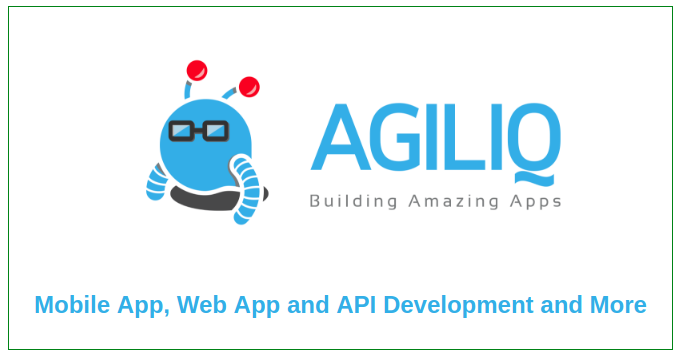ReactJS is component based. We devide the complex UI into basic components. After developing the basic components we again adds all these components to create a complex UI which also called as complex component. React controls the data flow in the components with state and props. The data in states and props are used to render the Component with dynamic data.
Understanding ReactJS Props
- In ReactJS we use props to send data to components.
- In ReactJS every component is treated as a pure javascript function.
- In ReactJS props are equivalent to parameters of a pure javascript function.
-
Props are immutable. Because these are developed in the concept of pure functions. In pure functions we cannot change the data of parameters. So, also cannot change the data of a prop in ReactJS.
- ReactJS funtion based component
import React from "react"; const Profile = (props) => { // props.img_url = 'http://via.placeholder.com/350x150' const style = { padding: '10px', border: '1px solid green', display: 'block', marginLeft: 'auto', marginRight: 'auto', width: '50%', color: '#4db1e8', textAlign: 'center', fontFamily: 'sans-serif' } return ( <div style={style}> <img src={props.logo_url} height="250px"/> <h1>{props.title}</h1> </div> ); } module.exports = Profile; - ReactJS class based component
import React from "react"; class Profile extends React.Component { render(){ // this.props.img_url = 'http://via.placeholder.com/350x150' const style = { padding: '10px', border: '1px solid green', display: 'block', marginLeft: 'auto', marginRight: 'auto', width: '50%', color: '#4db1e8', textAlign: 'center', fontFamily: 'sans-serif' } return ( <div style={style}> <img src={this.props.logo_url} height="250px"/> <h1>{this.props.title}</h1> </div> ); } } module.exports = Profile; - Import and use of one of the above ReactJS components like below
import React from "react"; import ReactDOM from "react-dom"; import Profile from "./components/Profile" ReactDOM.render( <Profile logo_url="https://books.agiliq.com/projects/django-design-patterns/en/latest/_static/logo.png" title="Mobile App, Web App and API Development and More"/>, document.getElementById("main") );- In above code we have passed two props “logo_url” and “title”. As we discussed earlier props are immutable. try to change the data of props if you succeded then let us know. The finished component looks like below image.

- we do not need to use
thisfor function based components to access props but we have to usethisto access props(this.props.<prop_name>).
- In above code we have passed two props “logo_url” and “title”. As we discussed earlier props are immutable. try to change the data of props if you succeded then let us know. The finished component looks like below image.
Understanding ReactJS State
- State is like a data store to the ReactJS component. It is mostly used to update the component when user performed some action like
clicking button,typing some text,pressing some key, etc. React.Componentis the base class for all class based ReactJS components. Whenever a class inherits the classReact.Componentit’s constructor will automatically assigns attributestateto the class with intial value is set tonull. we can change it by overriding the methodconstructor.- In many cases we need to update the state. To do that we have to use the method
setStateand directly assigning likethis.state = {'key': 'value'}is strictly prohibited.
- In many cases we need to update the state. To do that we have to use the method
- Let’s try to use
stateconcept in our component by changing a little code in above ReactJS component that we have createdclass Profile extends React.Component { constructor(props){ super(props) this.state = {"show_technologies": false} this.see_our_technologies = this.see_our_technologies.bind(this); } see_our_technologies(){ this.setState({"show_technologies": true}) } render(){ console.log(this.state) const style = { padding: '10px', border: '1px solid green', display: 'block', marginLeft: 'auto', marginRight: 'auto', width: '50%', color: '#4db1e8', textAlign: 'center', fontFamily: 'sans-serif' } const tech = { background: '#4db1e8', color: '#fff', padding: '5px', marginRight: '5px' } return ( <div style={style}> <img src={this.props.img_url} height="250px"/> <h1>{this.props.title}</h1> {this.state.show_technologies ? <p> <span style={tech}>Python</span> <span style={tech}>Django</span> <span style={tech}>Django REST</span> <span style={tech}>ReactJS</span> <span style={tech}>Angular</span> <span style={tech}> and More</span> </p> : <button onClick={this.see_our_technologies}>Click to see Our Technologies</button> } </div> ); } } module.exports = Profile;- After updating the component with above code then UI updates with a button

- When we click on the button we can see the technologies without button

- In above code we have overriden the method
constructorand set the initial state with keyshow_technologiestofalse. while rendering the component react checks theshow_technologiesvalue and if it is set tofalsereact only renders the button. we have bind theclickevent to the button. Whenever user clicks on it the event handler will change the state to{"show_technologies": true}by using the methodsetState. - Now, state is changed so, react will again render the component with new changes. The key
show_technologiesis now set totrueso, It hide’s the button and shows ustechnologiesas we have used the conditional operator. - Whenever the state updated in the component all of it’s children components will also renders again to render/show the latest changes.
- This is how react handles the
state.
- After updating the component with above code then UI updates with a button
Types of ReactJS Components
In ReactJS we have two different types of components.
- Stateless ReactJS Component
- All function based components can be considered as stateless ReactJS components.
- Stateless ReactJS Components are pure javascript functions so, we don’t need to have state.
- Stateful ReactJS Component
- All class based components can be considered as stateful ReactJS components.
- Stateful ReactJS Components inherits the class
React.Componentso,stateget’s inherited.
Stay tuned for our next post “Understanding ReactJS Component Lifecycle”
Thank you for reading the Agiliq blog. This article was written by Anjaneyulu Batta on May 25, 2018 in javascript , reactjs , state and props .
You can subscribe ⚛ to our blog.
We love building amazing apps for web and mobile for our clients. If you are looking for development help, contact us today ✉.
Would you like to download 10+ free Django and Python books? Get them here
